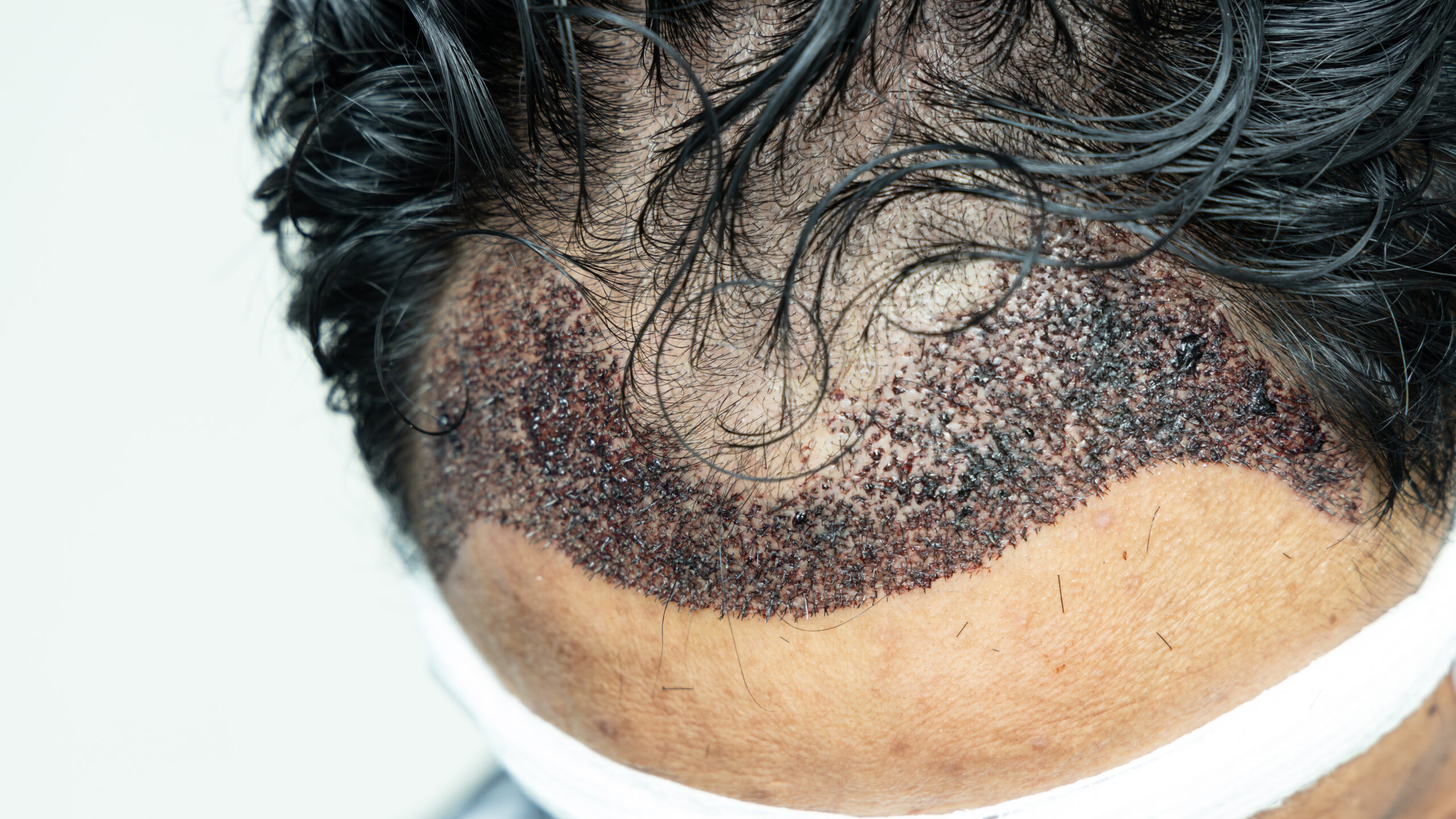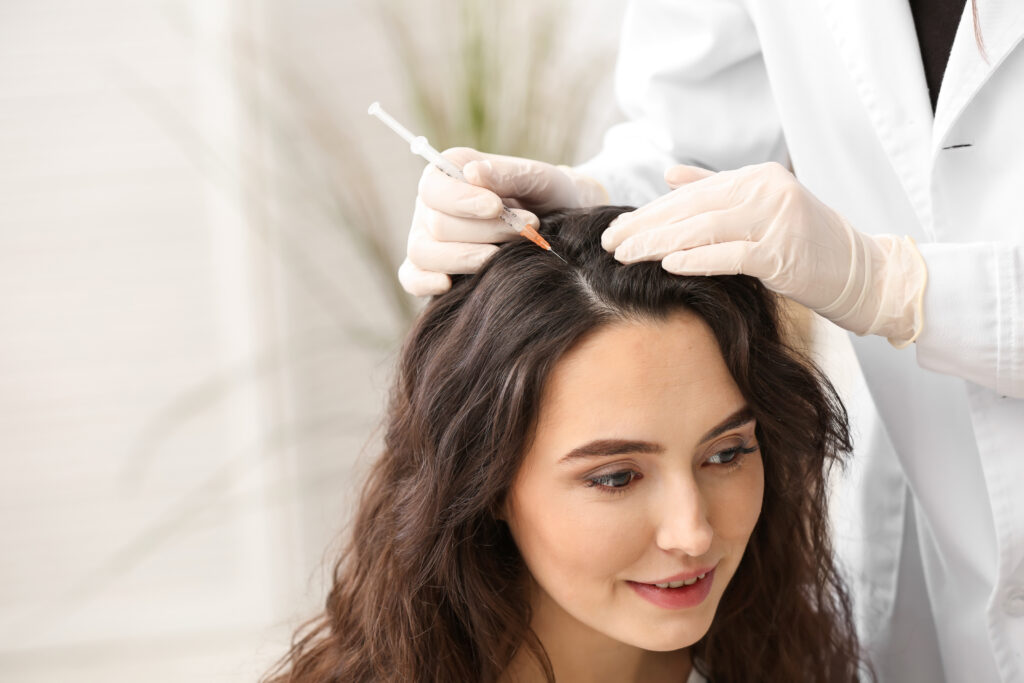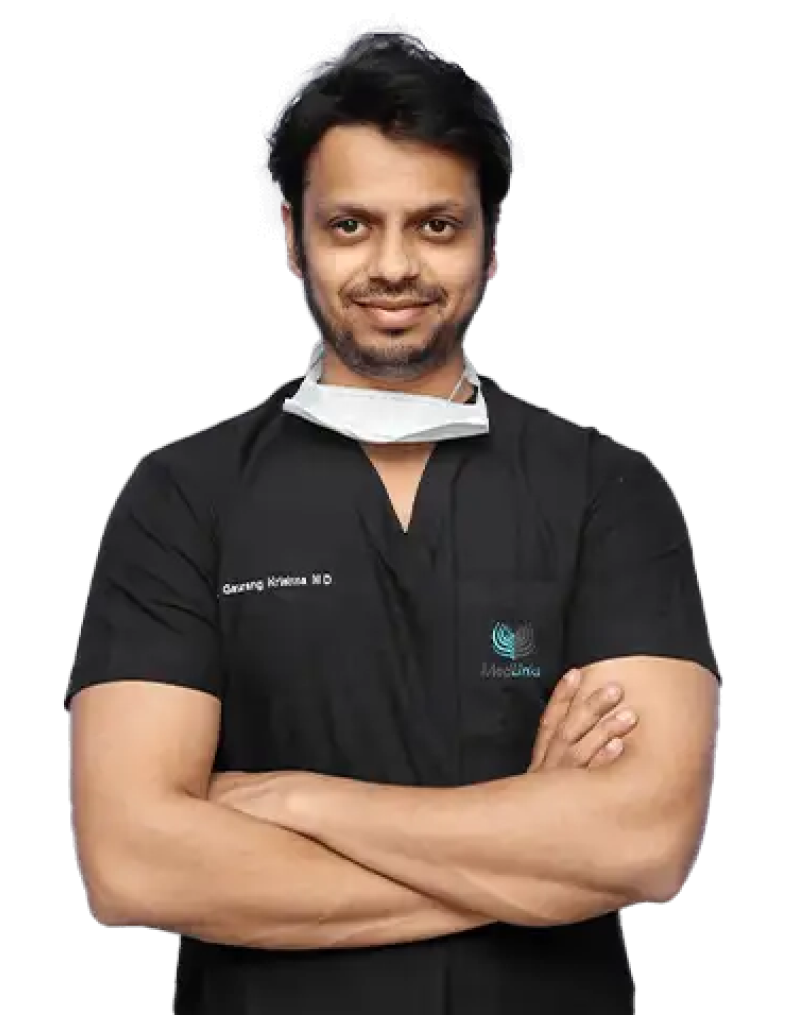Hair Transplant Evaluation
For a lot of people, a hair transplant is what could help bring back their hair. It is a surgery that utilises the hair you already have to suffice an area of your head where you experience the thinning or loss of hair.
Generally used to treat male pattern baldness, a hair transplant can also be used in the treatment of female pattern baldness, or for hair loss due to accidents, trauma, burns, surgery, etc.
Hair Transplant Evaluation
For somebody looking for a hair transplant, we evaluate the situation as follows:
- Confirming the diagnosis– The first step is to confirm the cause of hair loss. As Hair transplant is successful, especially in patterned hair loss, it is necessary to rule out other causalities like alopecia areata, scarring alopecia (active), telogen effluvium etc.
- Demonstrating the grade of baldness- We usually grade male hair loss into grades of 1 to 7 on the Norwood Hamilton scale. A Hair Transplant is typically advised from Grade 3 onwards only. In grade 2 we recommend Hair Transplant only after a detailed discussion with our doctors and taking into consideration the prospects of future hair loss.
- Evaluation of the donor area– Donor area strength is important when it comes to a hair transplant. Our doctors use densitometers and magnification to assess the density of hair and the average number of follicles in the grafts. This gives us an imprecise idea of the number of Follicular units that may be extracted safely and the number of hair that can be obtained from those grafts.
- Hairline marking– A proper hairline is marked depending on age, face shape, profession, baldness grade, marital status, and donor area strength.
- An approximate number of grafts– After hairline marking, the area to be transplanted is calculated and the number of grafts is estimated based on the expected density.

Hair Transplant Fundamentals Graft Number
The number of grafts that require to be transplanted to make the hair attractive and full again relies on how far hair loss has gone. This will affect the structure of the transplant.
The number of grafts required for complete surgical hair repair can vary because of significant variability between patients concerning their hair features, density, head size, scalp laxity, shape, facial attributes and general aesthetic needs.
-
Graft number is a function of area and density.
1
-
Area to be transplanted (cm2) x Density (grafts/cm2) = No. of grafts. So there is no fixed number of grafts needed for a particular stage of baldness.
2
Hair Transplant Fundamentals Graft Number
The number of grafts that require to be transplanted to make the hair attractive and full again relies on how far hair loss has gone. This will affect the structure of the transplant.
The number of grafts required for complete surgical hair repair can vary because of significant variability between patients concerning their hair features, density, head size, scalp laxity, shape, facial attributes and general aesthetic needs.
-
Graft number is a function of area and density.
1
-
Area to be transplanted (cm2) x Density (grafts/cm2) = No. of grafts. So there is no fixed number of grafts needed for a particular stage of baldness.
2


Follicular Units Hair Transplant
Follicular units are the basic construction blocks of hair transplant. A follicular unit means a cluster or a bunch of hairs. Hair occurs in a group of one, two or three or four Hairs – the comparative proportion varies from patient to patient. Dissection of such divisions and then transplanting them is called follicular unit transplantation.
The follicular unit not only includes a small group of hair follicles but also incorporates nerves, blood vessels and a tiny muscle known as the erector pilorum. The entire unit is packaged in collagen that covers it and makes the follicular unit a different structure.
Since the hairs in the follicular unit are very near together, transplanting follicular units lets the most hair be placed into the smallest possible recipient areas, giving fullness to the hair transplantation process. This ensures that these grafts will not appear pluggy, because follicular units depict the way hair rises in nature. Although using follicular units controls a pluggy look, they must be positioned in the proper direction and distribution to guarantee a natural formation for hair restoration.
Using hair grafts bigger than follicular units will always compromise naturalness in the hair transplant and using grafts more diminutive than follicular units will always result in less fullness.
Large Hair Transplant Sessions
Hair transplantation is a surgical process wherein the survival and arrangement of every graft are of key importance. This is where the expertise of a surgeon comes into the picture.
Our surgeons have vast experience in functioning large densely-packed mega-sessions surpassing 4000 grafts and providing world-class results with a transection rate of less than 1%. We use state-of-the-art technology and equipment to safely transplant a considerable number of grafts in a single session.
Our doctors aim to assist patients to get the best conceivable cosmetic result in terms of the total donor deserves while keeping their safety as the top priority.


Hair Transplant Artistry & Aesthetics
During any hair transplantation surgery, the follicular units to be transplanted are born from the back and sides of the scalp (donor area). The donor area of the scalp is genetically immune to dihydrotestosterone (DHT), the hair loss-causing hormone. Usually, the donor area consists of around 25% of a person’s total scalp hair, out of which, only 12.5% (half) of the hair can be used for hair transplant surgery without hair thinning in the area becoming noticeable.
As the donor hair will never be sufficient to completely replace all the lost hair of a patient, the artistry and knowledge of a qualified surgeon become extremely important for a hair transplant surgery to be successful.
Dr. Gaurang Krishna aims to provide patients with the most natural-looking hairline which best corresponds to their personality and enhances their appearance by striking the proper balance between symmetry and irregularity. Our team is an expert at efficiently reforming the frontal hairline of patients and recreating their hairline to its naturally mature position.
Looking for guidance?
Book a consultation today and clear all your doubts with MedLinks!

Frequently Asked Questions
Everyone loses hair daily at a rate of around 50 to 150 individual hairs per day. Usually, the hair grows back. If the hair follicle is thinned, nevertheless, this re-growth does not happen. All men experience some extent of gradual hair loss in their lifetime as a consequence of natural aging and transformations in the male hormone androgen. Women also may undergo hair loss.
Yes, it works! The transplanted hair is removed from the back of the scalp (donor site) and moved to the bald site (recipient site).
The transferred tissue is not “rejected” as it is not foreign tissue. The transplanted hair retains its characteristics; texture, colour, growth rate, and curl, after transplantation and re-growth.
Follicular units are the foundation of a modern hair transplant. Follicular unit groups vary from 1 to 5 hairs. A transplant includes pushing healthy follicular units to repopulate areas of hair loss.
Age is an essential factor. The suggested age is normally above 25 for men. Having a hair transplant way too early may lead to undervaluing hair loss that will result in a long-term unnatural hair pattern. Needing to be repaired at a later date.
Everyone is treated as per their needs, necessities and budgets to provide the highest most appropriate service possible. Many variables need to be taken into consideration such as hair type, the confidence of the patient, expectations and results which are best dealt with via individual consultancy and discussion.
Looking for guidance?
Book a consultation today and clear all your doubts with MedLinks!






























